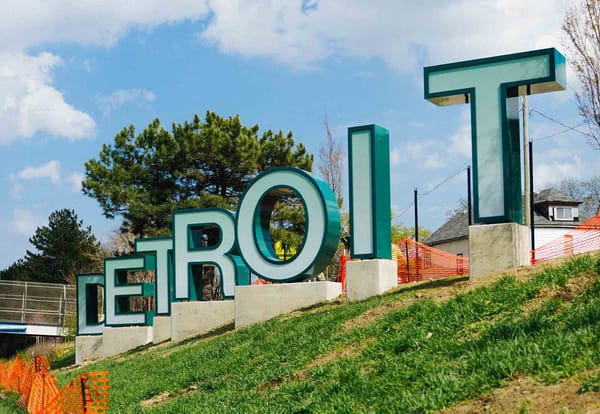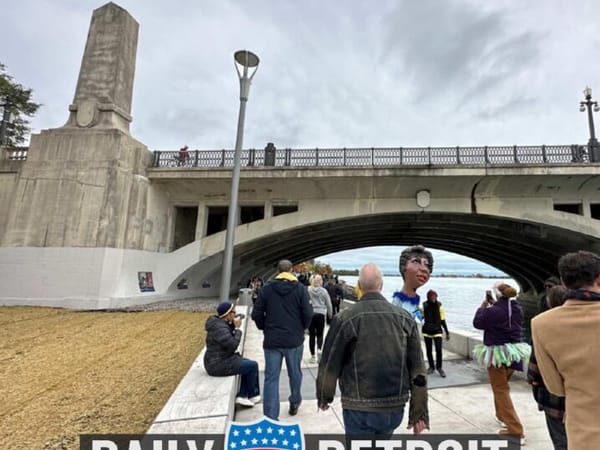Walking casually past many of the buildings and sites in Detroit, you’d never know they hold a violent past. However, many of the city’s iconic landmarks and attractions have had their own brush with organized crime.
The Mafia and its rivals, notably the Purple Gang, had their favorite haunts and places where they committed terrible crimes. Fortunately, time has largely removed the traces left behind by the criminals, and the collective memory has forgotten the sites’ negative associations. However, the fact still remains that these seven Detroit places have ties to organized crime.
1. Belle Isle

It shouldn’t come as a surprise that Belle Isle was a stop on rum-runners’ trips. The island’s strategic position is ideal for smugglers who want to move goods from Windsor to Detroit. Smugglers were known to use the island for their illicit activities, and they often bribed police officers and harbor masters to let them do so.
Unfortunately, Belle Isle proved to be the downfall of Detroit Police Captain Joseph A. Burkheiser in April 1929. He was charged with having stored a part of the liquor he confiscated in his living quarters in the Belle Isle station. He then took the liquor to Detroit using department vehicles.
2. Leland Hotel

The Leland Hotel at 400 Bagley St. opened on April 20, 1927 and boasted 800 rooms. It was considered at four-star hotel with a lovely ballroom and several stores. However, the Leland Hotel also saw its fair share of gang activity.
Detroit’s notorious Purple Gang frequented the hotel’s bar, and mobsters often enjoyed themselves in the Leland’s ballroom.
3. Hotel La Salle
Known by several names, including the Savoy Hotel and Hotel Detroiter, the Hotel La Salle was no stranger to mob criminal activity. It opened on September 15, 1926 as the Savoy Hotel, located on the corner of Woodward Avenue and Adelaide Street.
The hotel’s name was then changed to Hotel La Salle, but the name change didn’t do the building much good. Negative publicity was just around the corner.
On July 23, 1930, journalist and radio broadcaster Jerry Buckley had successfully campaigned for the recall of Detroit Mayor Charles Bowles. Bowles had done very little to fight organized crime in the city, and Buckley believed him to be corrupt and incompetent. Buckley was a vocal critic of Bowles on the air.
After leaving his studio on the mezzanine of the hotel, Buckley was gunned down in the lobby of the hotel. The gunmen shot Buckley 12 times. Only one bullet missed. While Buckley’s murder hasn’t been solved, many people believe that Buckley’s connections to the underworld and not his criticism of Mayor Bowles killed him.
Rumors swirled that Buckley had connections to Detroit Mob bosses and was planning on going to the police.
4. 701 and 702 Middlesex Road, Grosse Pointe Park

701 and 702 Middlesex Road were the residences of members of Detroit’s Mafia. The house at 701 is believed to have been owned by a Mafia enforcer. The house at 702 was home to Mafia boss Anthony Zerilli.
Neither of the houses are particularly old, but they are connected by tunnels, and it’s said the garage at 701 is even bomb-proof.
5. Cadillac Hotel

The Book-Cadillac Hotel held the title for Detroit’s tallest building as well as the tallest building in the world when it opened in 1924. The Purple Gang set up headquarters there, and the bar and coffee shop in the Cadillac saw many gang meetings. The leader of the Purple Gang, Abe Bernstein held a residence there until his death in 1968.
6. Vernor Highway Fish Market

The Vernor Highway Fish Market murders was pivotal in the Detroit underworld. After the death of longtime Detroit Mob leader Sam Catalanotte, the Mob began to split into factions. Two major players emerged, the East Side Gang and the West Side Gang.
The East Side Gang was led by William “Black Bill” Tocco, Joseph “Joe Uno” Zerilli, and Angelo Meli. The West Side Gang was led by Chester “Big Chet” La Mare. These gans often clashed, starting street wars once again.
Because disputes within the Mafia are bad for business, New York crime lord Salvatore Maranzano sent Gaspare “the Peacemaker” Milazzo to Detroit to try to set up a truce between the East Side Gang and the West Side Gang. Unfortunately, his efforts were unsuccessful.
On May 31, 1930, Milazzo and Sam Parina, an East Side Gang soldier, went to 2739 East Vernor Highway, a popular fish market. They waited there for what they thought would be peace talks with the West Side Gang. That talk never happened. The men were ambushed by West Side Gang gunmen and killed at 2739 East Vernor Highway.
That act set up Big Chet La Mare as the lone leader of the Detroit underworld, at least until February 1931.
The fish market that was located behind the old Michigan Central Station is long gone. It was roughly diagonal from what is now the 555 Gallery – a former police precinct.
7. The Old Detroit News Office

While the Detroit News Office isn’t directly related to the Mafia, it did have a brush with gang activity on June 6, 1928. That morning, five members of the Flathead Gang (frenemies of the Detroit Mafia) entered the Detroit News building and made their way to the second floor business offices.
Once there, they pulled shotguns out of paper bags they were carrying and proceeded to demand the payroll money. After getting the money, the men hurried to the first floor lobby where they were met by Sargent George Barstad, a policeman who’d come to see about the commotion in the building.
One of the Flatheads shot and killed Barstad before the gang members rushed outside and hopped in a getaway car waiting for them on Lafayette. Two of the men responsible for the robbery were caught and sentenced to death.
Paul Jaworski, the leader of the Flatheads was eventually captured and sent to the electric chair for a payroll robbery and murder in Pennsylvania.
During all the commotion at the Detroit News Office, The Detroit Times reporters (a rival paper at the time) were casing the place and had a complete report about the robbery, including clearly drawn maps of the Detroit News office the next day.











